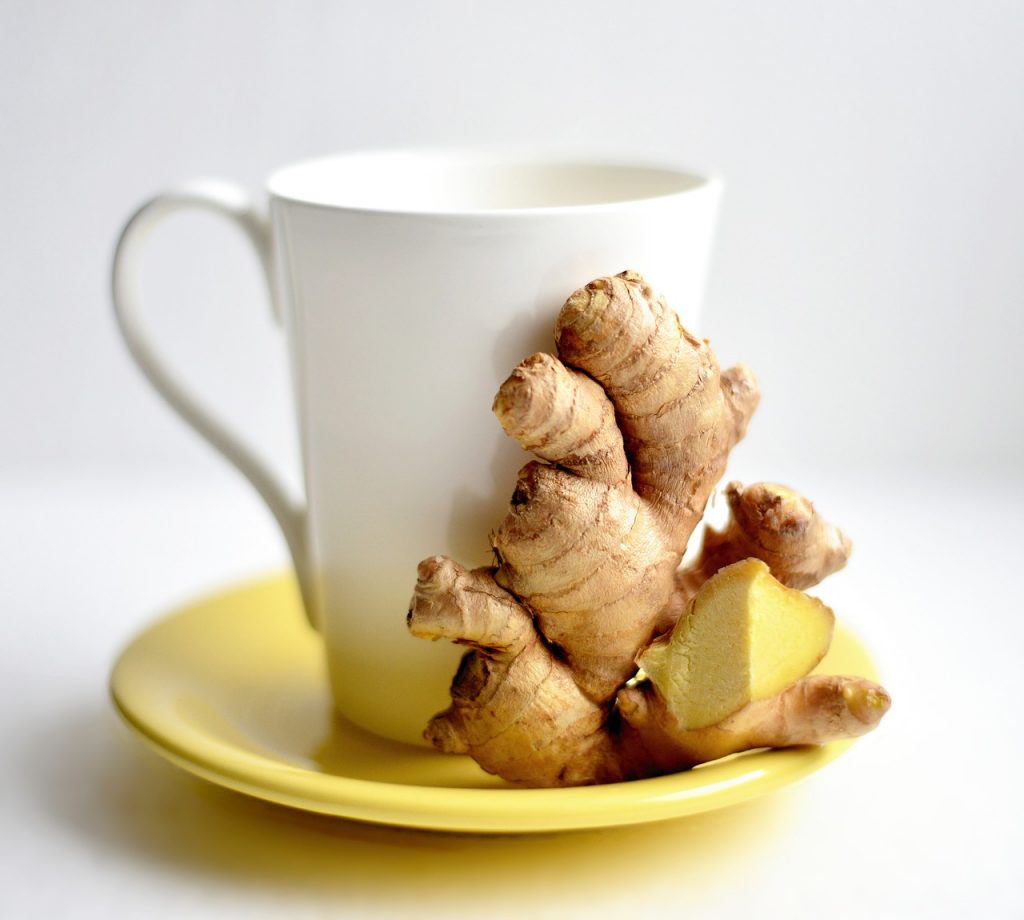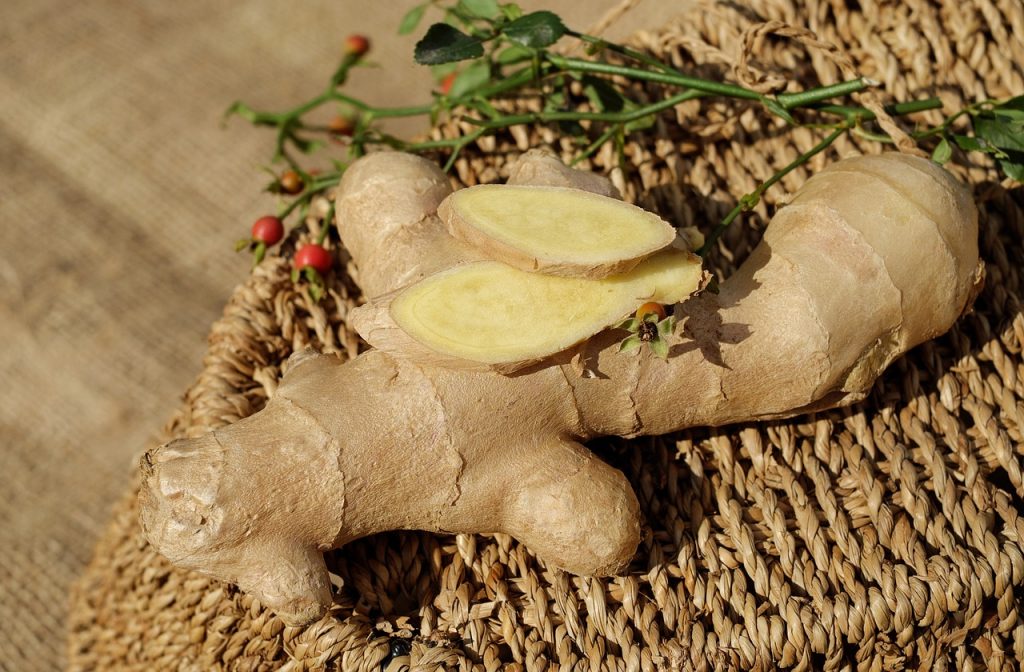Used and known for millennia, ginger has very useful virtues and properties for our health. The most widely used herbal remedy, widely available and often present on our tables, in supermarkets, in restaurants, both fresh and powdered. A remedy with many advantages that can have some disadvantages. Millions of people use ginger for both food and medicine.
Are you really sure you know everything about this remedy? What are its properties? Can everyone use it? Are there better qualities than others?
An informative article born from the many questions asked by my customers to answer and remove all doubts.
WHAT IS GINGER?
Ginger, whose botanical name is Zingiber Officinalis, is a perennial herbaceous plant, part of the Zingiberaceae family. Its height can vary between 70 and 100 cm, its tuberous rhizome produces aerial stems that end with large spikes which present flowers with a color that varies between yellow and purple. The term “Zingiber” derives from the Hindi term, dating back to the first century BC, “Singivera”, which comes from the Sanskrit “Srngavera” with a probable meaning of “root of the roots”. The parts of the ginger used in herbal medicine are the rhizomes. The rhizomes, which are not roots, despite their aspect remind us of it, are a modification of the underground stem which extends horizontally us the main reserve function. The rhizome is harvested between December and January when the stem withers and during the balsamic time of the plant itself, that is, when it has the highest concentration of active ingredients. The chemical composition of the ginger rhizome is made up of starches, essential oil, and an oleoresin that contains shogaoli and gingerols, responsible for the pungent flavor. Furthermore, normally, if the rhizome is decorticated it is called white ginger otherwise it is called black ginger.
WHERE DOES GINGER COME FROM? WHERE IS IT CULTIVATED?
Ginger is a plant native to India and Malaysia. Today it is widespread and cultivated in tropical wetlands around the world for mainly food purposes. In China it was originally grown only by the tribes of Inner Mongolia, but the crops soon spread across the country. The main producers are India (where about 20 varieties of ginger are grown), southern China, Malaysia, Nigeria, Japan, Thailand, Vietnam, Jamaica, Indonesia and Brazil.
There are several commercial qualities of ginger.
HOW TO CHOOSE THE BEST QUALITY OF GINGER
From a commercial point of view, the distinction is made on the basis of the place of origin since this implies a variation of the constituents (in particular essential oil) and a different preparation of the spice (peeled, unpeeled, bleached, whole, cut into various shapes) .
The best qualities come from Jamaica and India. Jamaican ginger has a light, pale yellow rhizome and conforms to the characteristics required by the German Pharmacopoeia. Instead, Indian ginger differs further according to the internal regions of origin.
In short, if you have the opportunity, choose ginger from either Jamaica or India to ensure excellent product quality.
A BIT OF HISTORY
Ginger has been known for thousands of years by Asian medicine and its characteristics quickly spread throughout Europe among Greeks, Romans, Arabs thanks to trade. It is a plant used for 2500 years whose virtues were also enhanced by Dioscorides, Pliny the Elder and Apicius. It was traditionally used to promote detoxification of the body through sweat, to calm nausea and stimulate appetite.
In Ayurvedic medicine, it is used in case of anorexia, bad digestion, and sore throat. In Chinese medicine, however, it is used to treat colds, nausea, vomiting, and shortness of breath. A new use has been found in China, and it is about giving mothers drink a ginger herbal tea before childbirth in order to allow breech babies to turn around. This statement is not supported by scientific theses, or at least I have not found any, but it is curious information that is worth knowing.
PROPERTY OF GINGER
Ginger has several biological properties and activities. One of the properties that you most probably also know is the antiemetic action. By antiemetic action is meant the property of suppressing nausea, vomiting and indigestion. Therefore the use of ginger is useful in case of motion sickness (nausea and dizziness from seasickness, car or plane), dyspepsia (digestive difficulty), subacid gastritis and pregnant vomiting.
Another important activity of ginger is the action on pain, arthritis, rheumatism and fibromyositis. Although scientific studies are ambiguous about this action, some components contained in ginger interfere with the inflammatory cascade and with the pain receptors. A chemical component, called zingibain is able to dissolve parasites and their eggs, therefore ginger is very useful in case of parasite infections.
New studies have also shown action on hypercholesterolemia, action on respiratory problems and antimicrobial action.
HOW TO USE GINGER
For each aforementioned action of ginger there are very specific posologies and preparations, which will not be described in this article.
Why won’t they be described in this article?
Well the answer is very simple especially if you have read my blog. First, of all it is necessary to have a consultation with the person directly concerned, understand the problem thoroughly and then recommend a certain dosage and a certain herbal preparation. As always, I strongly advise you to avoid “do it yourself”, but always contact an expert. Plants can have contraindications, side effects and interactions with drugs or foods.
The only preparation I can recommend is a ginger drink, easy to prepare at home.

After purchasing fresh ginger, weigh about 35/40 g. Wash it well, remove (if you want) the peel and cut it into rounds of about 1/3 inch. Place it in a pot with about 1.5 liters of water. Bring to boil and continue to boil for about 20 minutes with the lid on. At the end of the 20 minutes, turn off the heat and let it rest overnight with the lid on. With the preparation obtained, fill two one bottles of and a half liter and dilute it with water up to the cap. Sip it during the day and keep it in the refrigerator for no more than 4 days.
For me, this type of preparation is an excellent help when I travel by car or bus, but also when my stomach makes small tantrums.
PS. A very important note concerns the action of ginger on pregnant nausea. Although ginger has proven effective in the treatment of nausea in pregnancy, its use cannot be recommended as there are insufficient clinical studies to confirm its effect. Ask your trusted herbalist, your doctor, your midwife or the person who is taking care of you if you can use it.
With the hope that you liked this article and may have given you clarity on a very important herbal remedy that you can easily find even in the nearest supermarket, I greet you while sipping a spicy but tasty ginger drink.
If you want to stay up to date on all the information I share, I recommend you subscribe to my Newsletter. No, don’t worry, you won’t receive that many emails, but only one every two weeks or a few more if something important is happening that I think you should know. If you prefer you can also follow me on the Instagram or Facebook channel. The choice is always yours, without bonds.
I hug you dear reader, see you in the next article …
Love and Light
Mara – The Wellness Ways
Bibliography:
- “Prescription of Herbal Healing” 2nd edition, Phyllis A.Balch, CNC
- “Principi di Farmacognosia e Fitoterapia” uni.nova, M.Tognolini, M.Chiavarini
- “Bioactive compounds and bioactivities of ginger” Qian-Qian Mao, Xiao-Yu Xu
- “Piante medicinali dal mondo” Erbamea, Fausto Marelli

Dr. Mara Bianchini, B.S.
Holistic Therapist, Herbalist, Nutritionist, Reiki Master


